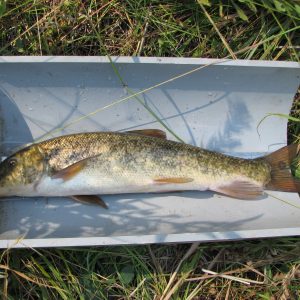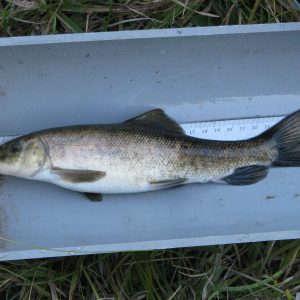Office Space
The field season has ended for ES&R monitoring. Our next mission would be to input data and write ES&R reports! Dan and I were on top of data entry from Day 1 and we almost completed the task except for a couple of sites. In order to complete the data entry, we had to separate ourselves from the rest of the office, because we did not want them to go insane with our Latin speak and number crunching. They were fine with our activity, but we wanted to be polite, because we sounded like two robots. (Plus, we did this at the library in a private room and a dude yelled at us for being annoying…<_<)
For example:
Myself: Dan! What did you get for Site 5531-008 in terms of Phlox longifolia.
Dan: Site 5531-008…PHLO2……Density Plot 1: 5, DP 2: 8, DP 3: 7…you got the jest…. 4: 8, 5: 9, 6:2…
Myself: Thank you, Dan. Could you tell me the Ground Cover Percentage? Dan: Bare ground 94%, Litter 5%, and Rock is 1%.
We performed our data entry in the BLM Hall of Legends (aka the conference room) located in the central section of the BLM building. The data entry for each site would take us between 20-40 minutes determining on the diversity and condition of the site we have monitored. This was very tedious, but very fun! We had the pictures of the site and compared them with the results. You would be amazed how many different kinds of plants would grow back after a fire. We did notice cheatgrass (Bromus tectorum), but many other native plants recovered in the seeding areas. We were finally done with the data entry….now it is time for the ES&R Reports!!
+8 Points Experience for Speaking Latin +10 Points Experience for Basic Mathematics
——————————————————————————————————————–The ES&R reports were interesting to type. We included precipitation graphs, plant diversity graphs for each site, a large amount of maps, methodology, results, pictures for each of the sites, and recommendations / conclusions. The reports ranged from 15-50 pages. Each of the range cons we wrote the report with added their observations, funding reports, seed mixes, and previous experiences with each of the sites. We submitted our rough drafts and received good feedback. We are now at the very end and gained an enormous amount of experience with report development and data entry.
+15 points Experience for Data Entry +20 Points Experience for ES&R Report Writing
———————————————————————————————————–
New Opportunities Abound
Our awesome mentor, Casey, visited us during our report writing and gave us an update for future projects! He wanted us to get as much experience from the internship as possible and developed interesting projects for us to work on. One of the projects was to work on the JUNO/ Trimble system. Since we had plenty of GIS experience, he wanted us to create layers, geodatabases, and maps for the whole office to use in the future. Casey wanted us to get plenty of experience using ArcPad, so we could develop a presentation for the office on how to use many of the features. Our mission was to test the tools, list the pros and cons of the system, and develop shortcuts to make the system easy to manage in the field.
Casey encouraged us to develop our own projects as well using ArcGIS and remote system applications. One of the main projects we could work on was the aroga moth project. By using remote sensing tools and algorithms on ArcGIS, we could use four banded satellite imagery and NDVI to detect plant health and find where the aroga moth populations were in the Burns District.
I talked with my mentor and other BLM biologists in the office about future field excursions and opportunities. I really wanted to get SOS training experience just to see what it is like (….since everyone else seems to be doing that. 😉 ). For a small period of time, I would be collecting sagebrush and forb seeds! I am pretty excited about that field opportunity! Another major opportunity that was offered was Mule Deer monitoring. This mission would be to identify what the mule deer forage on. This would expose myself to new plant communities and new field monitoring techniques. I am super ultra excited for the next part of my internship!! \(^_^\)
Misadventures
Vale and Lakeview: Follow the Treasure Map
If you have been following my blog (which I am sure a couple of people have…Hi Family!!!), you would know that I love to rock hound for rare and unusual rocks. My mentor dropped by our cubicle and gave me two treasure maps…no joke! The map had an X written with a sharpie, topography, and township and range. One site was located in the depths of the Vale District and the other was in the Lakeview District where I got a flat tire.
The Vale District was located to the east of the Burns District. The landscape was filled with hills and sagebrush for miles around. The roads were not the best, unamused rattlesnakes were everywhere, and it took me over three hours to get into the site. The site was located in a canyon on BLM land, which contained agates and thundereggs galore. I parked my car and traveled a mile or two into the canyon. I was shocked to see the whole stream bed was filled with agates and thundereggs! They were everywhere! I carried a large thunderegg and many small agates back to the car. I did clean off the medusahead (Taeniatherum caput-medusae) seeds…man, that grass was everywhere! I carried this fifty pound thunderegg around two miles back to the car. I was exhausted! Luckily, I brought an enormous amount of water and a Subway Club™. When I was hiking back I noticed an airplane in the air flying by….then a helicopter…..and two more planes. I quickly made it back to the Ford Escape and packed everything, because there was a fire nearby. When I exited the allotment, I saw the smoke coming from the Warm Springs area. I got to the highway to see all of the aircrafts fly around the fire. Even though the fire was probably ten miles away, the experience was pretty crazy. I managed to collect a large thunderegg and many agates.

Success!
————————————————————————————————————–
I returned to the Lakeview District to look for Mountain Blue Picture Jasper on Hart Mountain. Previously, I went into the area to search for sunstones and ended up getting a flat tire. This time I was prepared! I drove to the X on the map to another canyon. I managed to find clear feldspar, some small agates, and a nice chunk of Mountain Blue Picture Jasper. The area was picked over, but I managed to grab a couple of nice specimens. At the end of the rock trail there was a very nice waterfall. I was nervous about unamused rattlesnakes being in the area, but I did not encounter any.

This was where you can find Blue Mountain Picture Jasper!
White Headed Woodpeckers, Goshawks, and Sage Grouse!
I love bird watching in the Burns District. One of the birds that eluded me for a long time was the white headed woodpecker. I was given directions to one of my boss’s properties which contained an abundant population. He managed the open woodland, which made the landscape ideal for white headed woodpecker populations. I drove deep into the Malheur Forest to a cattleguard where two horses were waiting for me. They did not move when I drove up to them. I honked at them, but they stood there looking at me. One even sneezed on my car, so I drove around them to my destination. (I found out later that the horses hear a car and think it is their owner. When the owner honks his horn, that means it is time for treats…no wondering they did not want to move..they wanted a treat….<_<)

They wanted toll money…
I finally got to see the white headed woodpecker. They were everywhere!!! I was very excited to see a large number of them, despite the reports of their threatened status. They were not afraid of me and I managed to get close and take many pictures! To attract them, I had to pour water into the dog bowl. Many of the males were flying around and pecked at the metal roof, displaying their territory.

White Headed Woodpecker!!
On my way back home, I managed to see three juvenile northern goshawks waiting in the trees. They were probably hunting the white headed woodpecker. I slowly made my way through the loamy soil to the cattleguard and saw those two darn horses run up the hill trying to head me off. I quickly floored it and made it to the cattleguard before the horses got to me. Near the border of the sagebrush and forest ecotone, I saw many sage grouse walking across the road. Since it was dark, it was hard to see all of them. They were foraging on cheatgrass before moving onto the Wyoming big sagebrush nearby. This bird watching trip was amazing and I managed to see a new bird species! All I have to see now was 135 bird species before I have seen every bird species in North America. (Not including accidentals. Mostly I have to see the pelagic and Mexican border species.)
Exploring the Wild Blue Yonder
Since my fellow intern will be leaving for the Peace Corp very soon, I decided to take a small break and use my work comp time. For the next week I will be on vacation traveling along the California and Oregon coastline. The temperate rainforests, bogs, shorelines, and redwood forests would expose me to a variety of different new plant communities and birds species, which I am very excited about. For my next post, I will include some pictures under the misadventure section.
See you in a couple of weeks!!!
(/O_O)/……..To Be Continued…….\(O_O\)
Justin Chappelle CLM Intern working for the Burns/Hines BLM
P.S. This CLM Post has been sponsored by Tote the Note “Get Your Totes Today!”

And now…..your Moment of Zen…








































